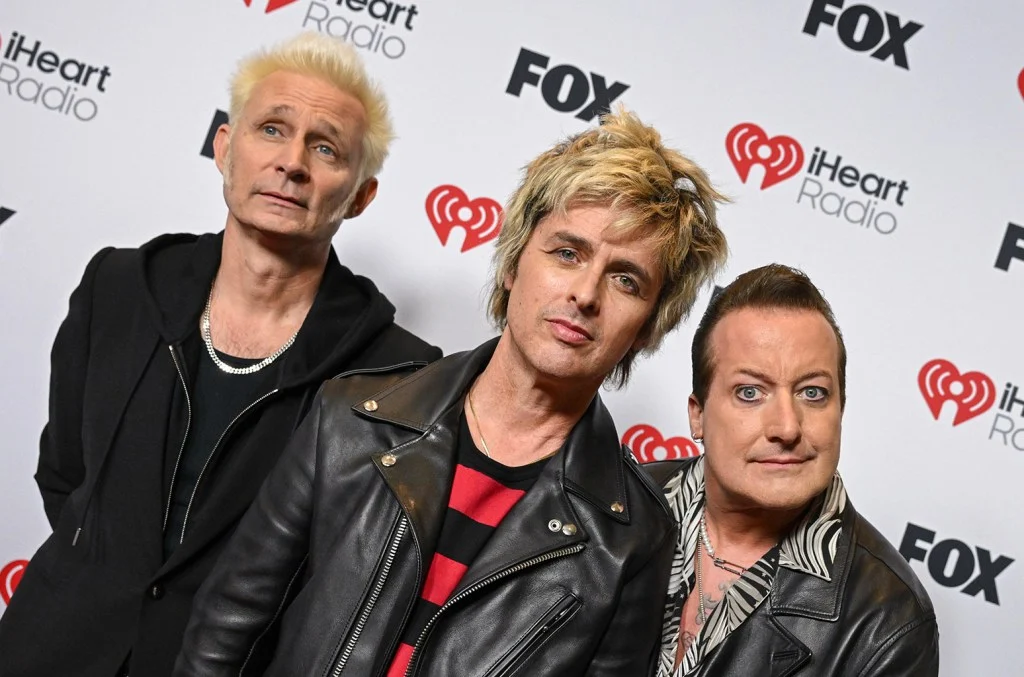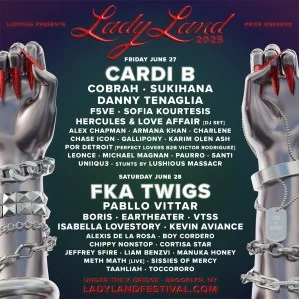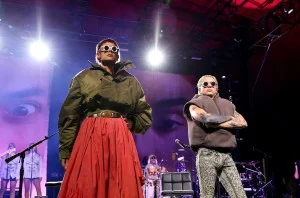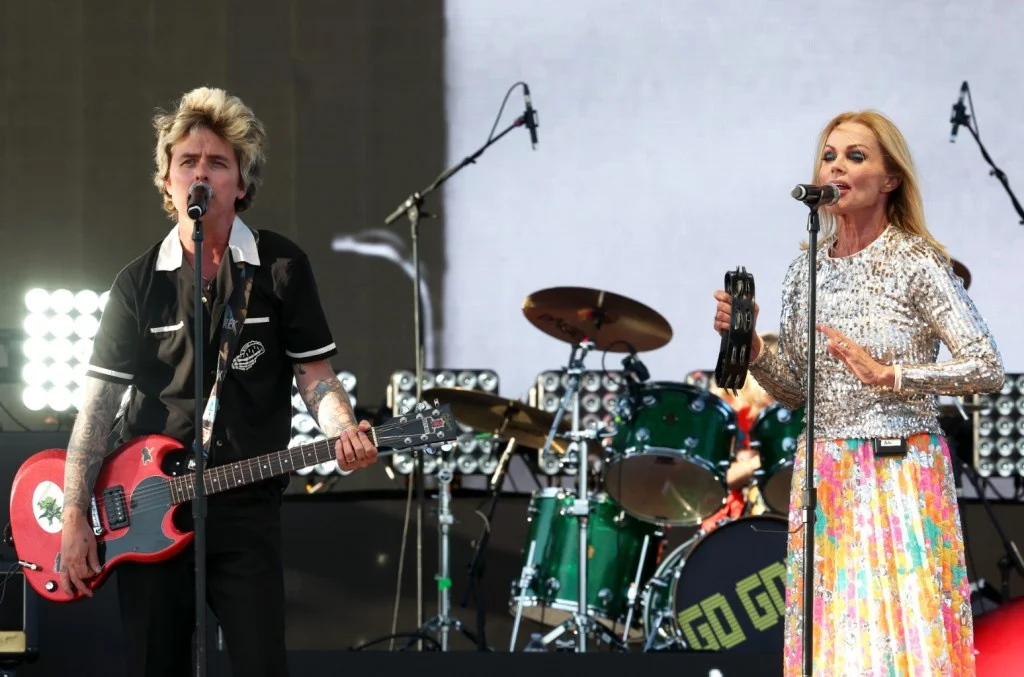festival
Page: 4
Weezer, Car Seat Headrest, Janelle Monáe, Bright Eyes, Aurora and Sylvan Esso are among the headliners for the 2025 Bumbershoot Arts & Music Festival. The 52nd annual edition of the Seattle fest will take place over Labor Day weekend (August 30-31) and feature the usual eclectic mix of music, delicious local food and drink and visual arts programming.
Explore
Explore
See latest videos, charts and news
See latest videos, charts and news
Other artists slated to take the stage at this year’s event include: The Budos Band, Indigo De Souza, Tank and the Bangas, Pretty Girls Make Graves, Pattie Gonia, Say She She, Hey, Nothing, Quasi, Tennis, Saba, The Linda Lindas, Bob the Drag Queen DJ set, Real Estate, The Murder City Devils, Frankie and the Witch Fingers, Spellling, Fat Dog, Bebe Stockwell and Digable Planets celebrating the 30th anniversary of Blowout Comb.
Trending on Billboard
Bumbershoot Weekend passes are available for $199 through Thursday (May 8), with the Big Gulp joint ticket going on sale for $340 on Friday (May 9) — for both Bumbershoot and the Capitol Hill Block Party (July 19-20) — along with single-day tickets for $125. The festival is also offering a Crew Pack for $800 which features weekend passes for four people; for more ticketing information click here.
In addition to two days of music against the backdrop of Seattle Center’s 74-acre urban campus, Bumbershoot will offer food from local restaurants, Cocktail Corner, VineShoot and BumBEERshoot highlighting the best food and drink from the Pacific Northwest. It will also feature art installations, comedy, runways shows in the Fashion District, a half pipe skate program in the Recess District and a Century 21 District with large-scale contemporary sculptures.
Check out the full lineup for the 2025 Bumbershoot Arts & Music Festival below.
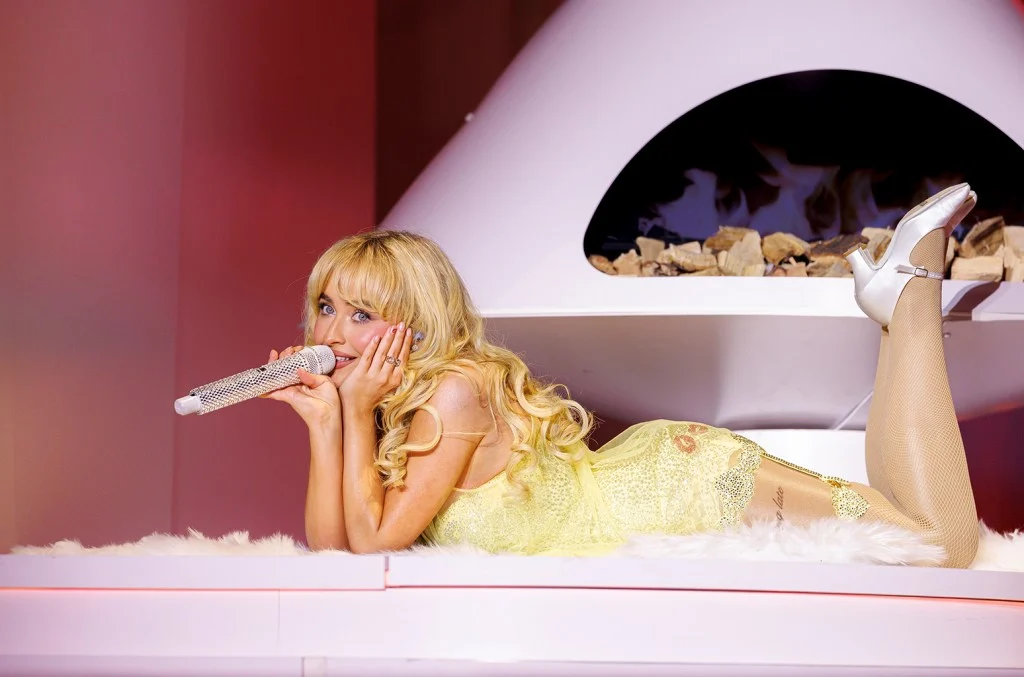
Sabrina Carpenter, Hozier, Doja Cat, Luke Combs, The Strokes, John Summit and Doechii are among the headliners of the 2025 Austin City Limits Festival. The fest that takes place in Zilker Park over two weekends — Oct. 3-5 and Oct. 10-12 — will also feature sets from Feid, Cage the Elephant, T-Pain, Empire of the Sun, DJO, Pierce the Veil, Rilo Kiley, Maren Morris, Mk.gee, Zeds Dead, Rainbow Kitten Surprise, Modest Mouse, Wet Leg, King Princess and many more.
Explore
See latest videos, charts and news
See latest videos, charts and news
The artists will spread out on nine stages, with this year’s event again slated to stream on Hulu, which will air select live performances, interviews and more during the first weekend, with a full broadcast lineup and schedule to be announced later this summer.
Trending on Billboard
Other acts on this year’s roster include: Role Model, Japanese Breakfast, Car Seat Headrest, Magdalena Bay, Olivia Dean, Marina, Gigi Perez, MJ Lenderman, Phantogram, Passion Pit, The Dare, Ca7riel & Paco Amoroso, Panda Bear, Anderson East, Lucius and many more.
Three-day general admission, GA+, VIP and platinum tickets will go on sale today at 1 p.m. ET here, with plans available starting at only $25 down; one-day tickets will be available at a later date.
Fans can also catch some shade at the Bonus Tracks stage, which organizers call a hub of “culture, connection, and good vibes [that] comes alive between music sets with a diverse lineup of programming. Expect artist and thought leader interviews, podcast recordings, cooking demos, drag performances, and creative ways to move your body and recharge your mind.”
Among the past highlights on that stage are author and podcaster Brené Brown in conversation with Foo Fighters singer Dave Grohl and Ted Lasso‘s Brett Goldstein, as well as intimate chats with Billie Eilish and Noah Cyrus and dance parties with Bob’s Dance Shop, and the best of Austin Drag hosting bingo and live shows.
Check out the full lineup and 2025 ACL poster below.
Eddie Vedder, Hozier and Green Day will headline this fall’s edition of the Ohana Festival on Doheny State Beach in Dana Point, CA. The three-day fest (Sept. 26-28) will also feature support on the Vedder-topped first night from Kings of Leon, Garbage, Stereophonics, Lukas Nelson, Kim Deal, Deep Sea Diver, Hinds, Girl and Girl and more.
Explore
See latest videos, charts and news
See latest videos, charts and news
Night two will feature Hozier atop a bill with Leon Bridges, Rainbow Kitten Surprise, Tedeshi Trucks Band, Royel Otis, Margo Price, Mdou Moctar, Mon Rovia, Chaparelle, David Duchovny and the Alain Johannes Band.
Trending on Billboard
The final night will pair pop punk veterans Green Day with Cage the Elephant, Wet Leg, Jams, Mannequin Pussy, the Chats, Lambrini Girls, The Murder Capital, The Criticals and Skating Polly.
A pre-sale begins on Thursday (May 1) at 10 a.m. PT, followed by a public on-sale at 12 p.m. PT if any tickets remain.
One of the highlights of last year’s Ohana fest was founder and Pearl Jam singer Vedder bringing out his 16-year-old daughter Harper to sing a mash-up of PJ’s signature cover of Wayne Cochran’s 1961 car crash tragic love song “Last Kiss” with the second-generation Vedder taking over to slip in the first verse from Taylor Swift’s Fearless song “The Best Day.” The 2024 version also featured sets from Maren Morris, Devo, Dogstar, Sting, Black Pumas and Alanis Morissette, among others.
Before that, Pearl Jam will take the stage to headline at the New Orleans Jazz & Heritage Festival on Saturday night (May 3) and Vedder will be on hand at the Tribeca Festival on June 12 for the premiere of his documentary about the devastating childhood skin disorder epidermolysis bullosa, Matter of Time.
Check out the full poster for the 2025 Ohana Festival below.
All products and services featured are independently chosen by editors. However, Billboard may receive a commission on orders placed through its retail links, and the retailer may receive certain auditable data for accounting purposes.
In the heart of Palm Springs, the Coachella Valley Music and Arts festival came and went with a bang, from Lady Gaga‘s extravagant “Mayhem In the Desert” set, to Charli XCX‘s electrifying Brat performance with surprise guests. But this year marks a significant shift for concert culture as the music festival brings in Loop Earplugs as its first official earplug partner.
Explore
Explore
See latest videos, charts and news
See latest videos, charts and news
The collaboration also delivers a limited-edition Loop x Coachella Experience 2 Earplugs that quickly became a go-to accessory for many in attendance.
Trending on Billboard
As the growing awareness of hearing health continues to rise, this partnership encourages users to tear up the dance floor without tearing up their eardrums in the process. With 17 decibels(SNR) of filtered noise reduction, the earplugs, which were sold at both Coachella weekends, ensures clear sound while protecting ears.
Adventuring to the Sahara, Yuma, and Sonora stages, which typically offer lineups of electronic dance music, the Loop earplugs shine when blocking out pounding subwoofers, so you can enjoy the music without sacrificing sound quality or risking hearing damage. Conversations may be muffled with them on, but when a Chase & Status set is happening, who’s is trying to talk?
“The Loop experience is actually made to reduce noise, but not distort it, so that you’re protected and also you’re still in the music, in the festival, in the atmosphere,” Loop co-founder Maarten Bodewes tells Billboard. “Loop started as a way for us to keep enjoying live music experiences without the negative side effects. It’s incredibly rewarding to have Coachella join us on that journey, making hearing protection a more natural, welcome and intrinsic part of live music culture.”
Limited-edition
Loop x Coachella Experience 2 Earplugs
The days of carrot stick-esque foam earplugs that fall out in seconds are over. The limited-edition Loop x Coachella Experience 2 Earplugs provide as much design aesthetic as they do functionally. Inspired by the festivals desert location, the earplugs feature a modern gradient design mixing sky blue and sunset orange for a dusk till dawn aesthetic. They come with multiple sized tips so they stay snug in your ear during any activity the day brings, as well as a matching Loop x Coachella Carry Case and an optional Link connector cord. There is a bit of a learning curve to get them to sit properly in your ear, but after some minor adjustments they fell pretty comfortable for long-term uses.
“From a design perspective, we looked at like what is typical about Coachella,” says Bodewes. “It’s in the desert. It goes from dusk till dawn, and if you look at the color of dusk, it’s more the bluish hue, and dusk is more of a orange hue. So we tried to make it from dusk till dawn.”
limited-edition
Loop x Coachella Link
As Coachella kicks off the 2025 festival season, Loop is leading the charge in this new era of specially designed hearing protection and quickly becoming a go-to essential for concert goers. Its sleek design, resembling daith piercings, sets it apart from typical earplugs on the market, and adds a element of stylish fun for vibrant festival looks. With an affordable price point, the Loop x Coachella Experience 2 earplugs are a game-changer for live music.
The Loop x Coachella Experience 2 earplugs ($39.95 USD), as well as the duo’s link connector ($29.95 USD), are now available on Loop’s site here.
The Pilgrimage Music & Cultural Festival is set to bring surges of guitar-slinging rock, Red Dirt country, blues and Americana when the annual fest returns to The Park at Harlinsdale Farm in Franklin, Tenn., Sept. 27-28.
Explore
See latest videos, charts and news
See latest videos, charts and news
John Mayer, Kings of Leon, Turnpike Troubadours and Young the Giant lead this year’s lineup, which also features Father John Misty, Sam Barber, Better Than Ezra, Colony House, American Aquarium, Grace Potter, Maggie Rose and Angel White.
Others on the bill also include Sam Grisman Project, The Heavy Heavy, Taylor Hunnicutt, Eddie 9V and verygently. The Americana Music Triangle will highlight Ben Chapman’s Peach Jam featuring JD Clayton, Meg McRee, Will McFarlane and Sam Grisman Project featuring Vince Herman, Lindsay Lou and Cristina Vane. The fest will offer a range of stages and amenities, including the VIP Village, the Midnight Sun Stage, the Gold Record Road Stage, the Craft Beer Hall and the Americana Music Triangle.
Trending on Billboard
Since its inception in 2015, the Pilgrimage Music & Cultural Festival has become a must-see experience, boasting headliners including Zach Bryan, Justin Timberlake, Chris Stapleton, Keith Urban, Eddie Vedder and Willie Nelson over the years. In 2024, the headliners included Dave Matthews Band, Noah Kahan, Hozier and NEEDTOBREATHE. The fest is produced by Better Than Ezra frontman Kevin Griffin, along with Michael Whelan and W. Brandt Wood.
Mayer’s most recent album, 2021’s Sob Rock, reached No. 2 on the all-genre Billboard 200, while Kings of Leon released its more recent album, Can We Please Have Fun, nearly a year ago. Turnpike Troubadours just released its new album, The Price of Admission, and launched a series of The Boys of Oklahoma concerts in Stillwater, Oklahoma, alongside Cross Canadian Ragweed.
Tickets for Pilgrimage Music & Cultural Festival go on sale starting at 10 a.m. CT on Thursday, April 17.
With Pride Month just around the corner and a multitude of queer-focused music festivals kicking off in June, the folks over at LadyLand are here to give you one more headline-making event to consider for your Pride celebrations. On Wednesday (April 16), LadyLand announced that Cardi B and FKA Twigs are the headliners for its […]
The first weekend of Coachella unfolded with a variety of Latin artists spanning genres as diverse as regional Mexican music, “trippy pop,” indie pop, EDM, and even classical music… with a twist. The lineup kicked off on Friday (April 11) with the eccentric Argentine duo Ca7riel & Paco Amoroso, the Peruvian Amazonian cumbia band Los […]
Billie Joe Armstrong made a surprise appearance during the Go-Go’s afternoon set at Coachella 2025 on Saturday (April 12).
Ahead of Green Day’s headlining performance that evening, the band’s frontman joined the Rock & Roll Hall of Fame-inducted group for a rendition of their 1984 hit song “Head Over Heels.”
In the hours leading up to the collaboration, Armstrong teased a “special surprise” on Green Day’s Instagram account. “Go see the go gos,” he wrote alongside a photo of the festival’s three-day lineup poster.
Following the Go-Go’s set on the Outdoor Theatre stage, Armstrong returned to social media to celebrate the moment.
Trending on Billboard
“Head over heels after playing with @officialgogos at @coachella,” the singer-songwriter captioned a backstage photo with the band on Instagram. His post also featured a carousel of snapshots from the performance, including an official setlist.
The Go-Go’s responded with a post of their own, sharing a photo on Instagram with Armstrong and writing, “We had the time of our lives!”
This year’s two-weekend Coachella festival runs April 11–13 and April 18–20. Saturday lineups are headlined by Green Day, with additional performances from Charli XCX, Anitta, Clairo, ENHYPEN, Jimmy Eat World, T-Pain, and more.
“Death, taxes and… rock n roll,” Armstrong told Billboard ahead of Green Day’s foray into the desert. “In this world gone sideways we know one thing for certain – rock n roll is forever, and its spirit is needed now more than ever. So bring your rage, your hope, and your loudest voice. Coachella, let’s have the time of our lives.”
The festival’s opening day on April 11 delivered standout moments from Lady Gaga, Tyla, LISA, Mustard, and more. Read Billboard’s full recap of day one here.

As artists and fans from across the globe are flocking to the desert for this year’s Coachella Valley Music and Arts Festival, African music is set to make its biggest splash yet. South Africa’s Tyla, Nigeria’s Rema and Seun Kuti & Egypt 80 and Ghana’s Amaarae will take over the festival this weekend and next. […]

Mexican president Claudia Sheinbaum expressed her condolences on Monday (April 7) over the deaths of two photographers on Saturday (April 5) during the AXE Ceremonia music festival in Mexico City. The president said her government would review the license granted to the venue at Parque Bicentenario.
“We regret and send our solidarity to the families of those who lost their lives in this accident,” Sheinbaum said during her morning press conference. “Beyond the fact that it was an accident, we need to look into how the equipment that fell was set up. An investigation needs to be carried out. There should be no impunity in this case.”
Photographers Miguel Ángel Rojas Hernández and Citlali Berenice Giles Rivera died over the weekend when a crane carrying a decorative metal object collapsed during the festival. The accident prompted city authorities to cancel the second day of the event on Sunday (April 6). The attorney general’s office of Mexico City announced the start of an investigation..
Trending on Billboard
Sheinbaum noted that the mayor’s office of Miguel Hidalgo, the borough where Parque Bicentenario is located, is responsible for authorizing such events, regardless of the federal ownership of the property. As a result, she instructed the Secretariat of Agrarian, Territorial, and Urban Development (SEDATU) to review the venue’s license, assess the conditions under which it was granted, and determine whether it is feasible to revoke their license.
Earlier on Monday, the AXE Ceremonia festival released a statement on the fatal accident, extending its condolences to the victims’ loved ones. “From the very first moment, we have been by the families’ side, providing them with all the support and assistance we can,” it reads.
British band Massive Attack, who, along with rapper Tyler, the Creator, headlined the festival on Sunday, joined in expressing their condolences on social media over the deaths of the photographers. “We are shocked and saddened by the tragic and avoidable deaths of Berenice Giles and Miguel Hernández. Our thoughts are with their families and friends during this difficult time,” the band said in their Instagram Stories.
On Sunday (April 6), friends of the two victims, photographers, journalists, content creators, and members of the public held a protest outside Parque Bicentenario to honor them and demand that there be no impunity in the investigation.
“There wasn’t any clarity about what had happened until we left the event. It’s absolutely devastating,” Mexican artist Luisa Almaguer, who performed as part of Saturday’s lineup at AXE Ceremonia, told Billboard Español. “The show definitely should not have continued.”
On Monday, the funerals for Miguel Ángel Rojas and Berenice Giles were held in Mexico City, according to reports from the N+ Foro news channel.

 State Champ Radio
State Champ Radio 